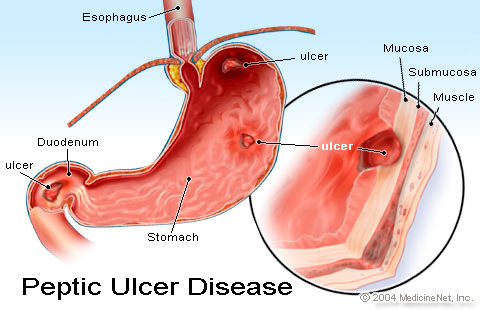
This week's topic was the digestive system and how it works. We focused mostly on the organs we could find in the dissection: esophagus, stomach, liver, gall bladder, pancreas, small intestine, and large intestine.

- The esophagus is the tube that runs down from the mouth to the stomach, transporting food. It runs along the trachea, which is the windpipe that carries air down to the lungs. The trachea is rigid, to ensure that you can always breathe, but the esophagus is soft and can flatten easily. Muscles squeeze food downward, so that you can swallow food even if you are lying down or even upside down. This process is called peristalsis.

- The stomach is basically a sack that contains acid, enzymes, and bacteria that all work together to digest food. The mucus lining protects the walls of the stomach from the dangerous acids. If the acid in the stomach burns a hole in the stomach wall, it is called an ulcer. Acid reflux is when acid from the stomach comes up the esophagus to the back of the throat. Usually, the valve between the esophagus and the stomach prevent this from happening, but sometimes that valve is faulty or doesn't work. The sensation from acid reflux is a burning in the back of the throat.

- The liver is the largest internal organ, and the pig has five lobes (humans have four lobes). It performs many important functions in the body, including production of bile, which helps us digest fats. Medicines, toxins, and alcohol (which some people might call a toxin, some might call a medicine) are all broken down in the liver to keep us safe. Alcoholics generally consume so much alcohol at a time that it overwhelms the liver, and repeated cycles of alcohol abuse can lead to permanent liver damage. Some vitamins and iron are stored in the liver, but bile is actually stored in the gall bladder. You can live without your gall bladder but because you can't add bile to your food while it is being digested, you won't be able to eat much fat (such as donuts!).
- We had trouble finding the pancreas in the dissection, but it is a whitish organ tucked near the stomach. It is a multi-tasking organ, because it does two different things at once. Beta cells in the pancreas produce and secrete insulin to help regulate blood sugar.

- When your body cannot regulate blood sugar, it is called diabetes, and Type 1 diabetes is due to the beta cells actually being missing or dead, which can happen from an auto-immune process. That is when your immune system attacks itself -- for some reason, the immune system treats the beta cells like foreign invaders to the body and kills them. The rate of Type 1 diabetes has been increasing gradually over the last 50 years, and we don't know why. Type 2 diabetes is when the beta cells are not being killed but for some reason are not working very well to regulate blood sugar. Mostly this is due to eating too much sugar, being overweight, and not getting enough exercise. Getting in shape can help for Type 2 diabetes, and for either type of diabetes it is very important to manage your sugar to avoid lots of negative health effects from too much or too little sugar in your blood.

- The small intestine is the really long tube the the broken down food flows through after the stomach, so that the nutrients can be absorbed by the body. 90% of digestion occurs in the small intestine, and it has 3 parts: the duodenum, the jejunem, and the ileum. We tried to dissect them to see how long they were, and one seemed to be about 6 feet long! In general, the small intestine is about 3 times the length of the animal.
- The large intestine is the wider, shorter tube that the digestive material flows through after the small intestine. Here, the water gets reabsorbed so that what is left can be formed into bowel movements and then excreted. To flow through the small intestine, the material needs to be watery, but if it flows too quickly through the large intestine, not enough water will be removed and it will be diarrhea. Yuk! The color of the poop is because of the bile that got added earlier to digest the fats.

- Spleen and kidney: The spleen and kidney were part of this dissection because of their location within the structures we were dissecting, but they are not part of the digestive system. The spleen is a lymph organ and is part of the immune system. Cells inside learn to produce antibodies to germs that we encounter, and the body can kill off the germ much faster next time. It gets enlarged when you have mono, because it is producing a lot of immune cells, and you can live without your spleen but will have trouble fighting off certain infections. Kidneys are part of the urogenital system, which we will discuss next week.
 This week's topic was the digestive system and how it works. We focused mostly on the organs we could find in the dissection: esophagus, stomach, liver, gall bladder, pancreas, small intestine, and large intestine.
This week's topic was the digestive system and how it works. We focused mostly on the organs we could find in the dissection: esophagus, stomach, liver, gall bladder, pancreas, small intestine, and large intestine. 






No comments:
Post a Comment